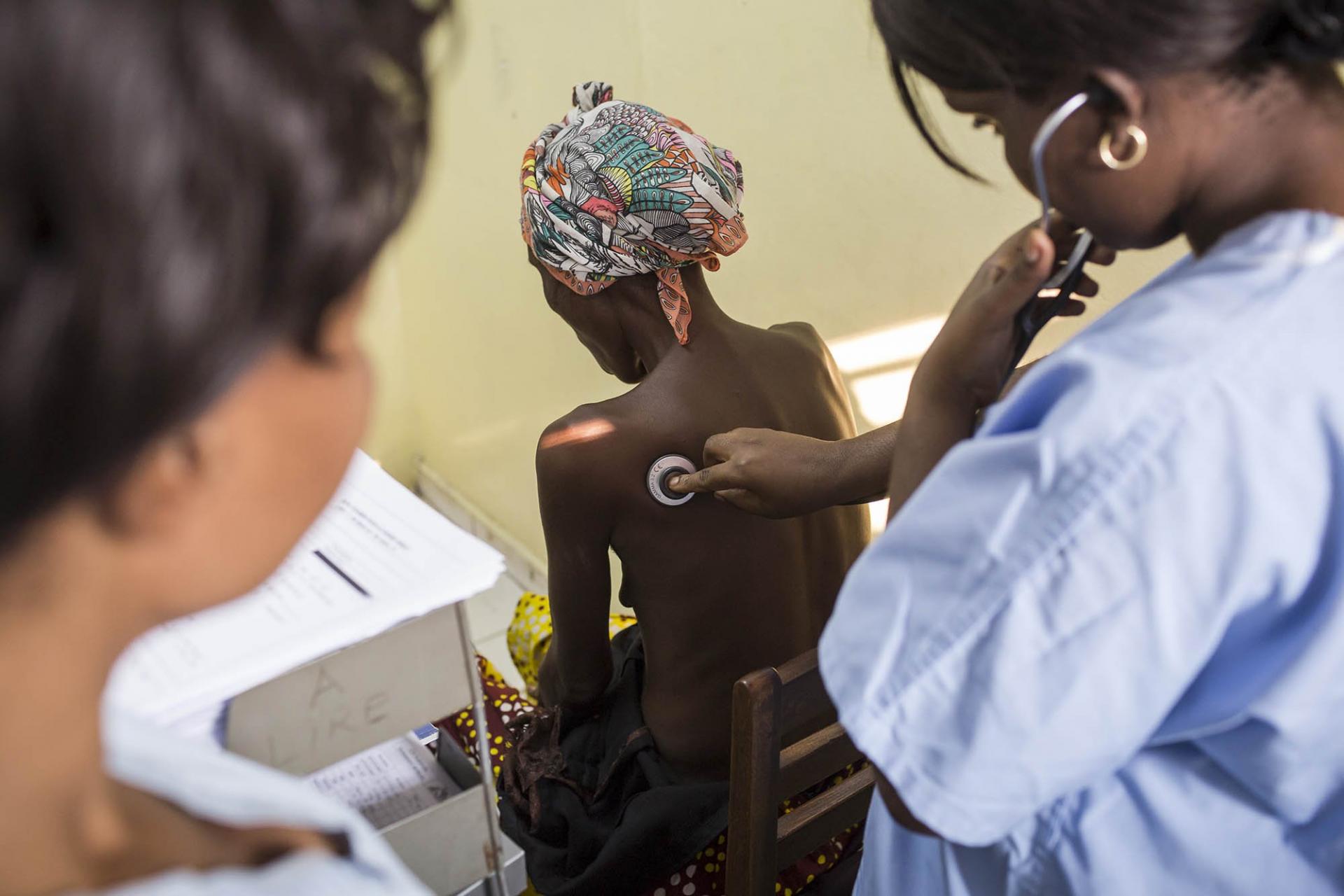In 2015 alone, 1.1 million individuals still died due to HIV, despite being in an age of free anti-retroviral treatment (ART) that is more available and effective than ever before. In MSF-supported hospitals in Guinea, DRC, Kenya and Malawi, we witness a 30-40% mortality rate among patients with HIV. The majority of these patients are hospitalised with CD4 levels less than <200 cells/µL, the threshold used to define Advanced HIV.
CD4 monitoring – at initiation and when people living with HIV (PLHIV) become severely ill – therefore remains critical: it is the best predictor of mortality for PLHIV and allows to quickly identify the advanced disease as well as guide clinical management.
The same opportunistic infections (OIs: tuberculosis, cryptococcal meningitis, toxoplasmosis) are consistently associated with advanced HIV, yet there is a lack of access to OI treatment and diagnosis tools like TB LAM and CrAg.
In our hospitals, advanced HIV today is not what it used to be: most of our patients are now ART-experienced. It further complicates management of those patients because of the balancing act between urgently reconstituting the patient’s immune system, while having to manage the risk of viral resistance.
In the community, the majority of people living with advanced HIV are untested and untreated, highlighting the need for innovative HIV testing strategies beyond the clinics. But surviving advanced HIV is possible: it requires quick actions and investments at the community, Primary Health Care (PHC), hospital level and back to the community.
